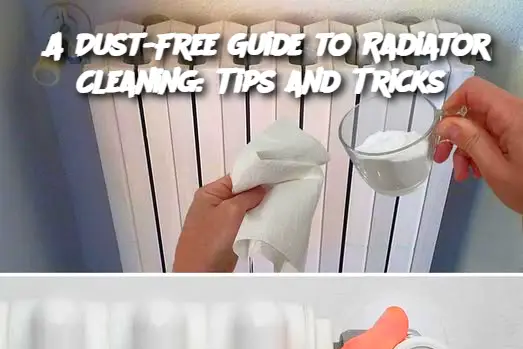ADVERTISEMENT
For Oil Radiators: If you have an oil-filled radiator, make sure to avoid getting any water inside the unit. Focus on wiping the external surface and using a microfiber cloth to dust the exterior fins.
Heavy Duty Cleaning: For radiators with built-up grime or stubborn dust, consider using a mixture of vinegar and water instead of dish soap. This solution can effectively break down oil and dust buildup.
FAQ:
Can I use a regular cloth instead of a microfiber one? While a regular cloth can work, microfiber cloths are ideal for cleaning radiators because they trap dust and particles more effectively, reducing the chance of spreading dust around.
How often should I clean my radiator? Cleaning your radiator every 1-2 months is recommended to maintain efficiency and cleanliness. If you live in a dusty environment, you may need to clean it more frequently.
Do I need to remove the radiator to clean it properly? In most cases, removing the radiator is unnecessary. A vacuum and brush are usually sufficient to get the job done. However, if you're doing a deep clean and want to remove the radiator, ensure the system is off and completely cool before attempting.
What if my radiator still smells after cleaning? A lingering odor may be a sign of dust, mold, or mildew trapped inside. If cleaning doesn’t resolve the smell, consider using a radiator deodorizer or calling a professional to inspect the system for any hidden issues.
Can I clean my radiator without turning off the heat? It’s always better to clean radiators when they’re off and cool. Cleaning a hot radiator can lead to burns and is generally less effective because the dust can stick to the hot surfaces.
This method allows you to clean radiators without the hassle of spreading dust through your home. Enjoy a cleaner, fresher, and more efficient heating system!
ADVERTISEMENT
